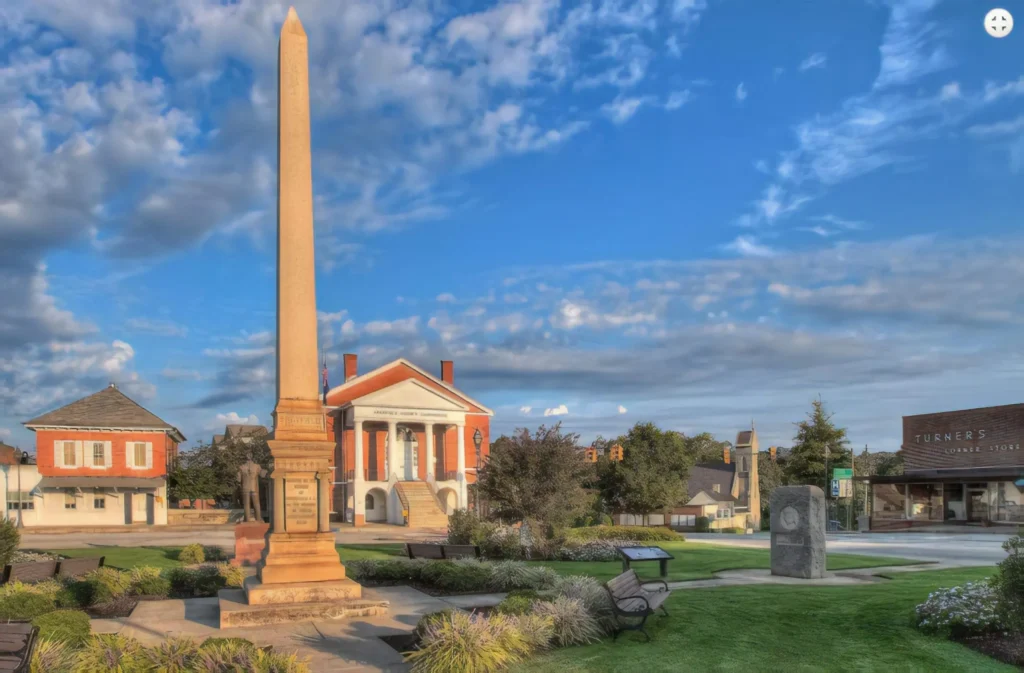Edgefield County, nestled in the heart of South Carolina, boasts a history as colorful and diverse as the landscape itself. From its roots in early American history through its pivotal roles in the Civil War and the Civil Rights Movement to its continuing legacy in pottery and politics, Edgefield’s story is one of resilience and remarkable characters.
Early Beginnings and Revolutionary War
Edgefield County was formed in 1785 as part of the larger Ninety-Six District, a significant settlement area during the colonial period. The region was the site of several skirmishes and battles during the Revolutionary War, with local militias playing crucial roles in the fight against British rule. The early settlers of Edgefield were primarily of English, Scottish, and Irish descent, bringing a fierce spirit of independence that would define the county’s history.
Antebellum Period and Civil War
By the 19th century, Edgefield had become a prosperous area, largely due to its agriculture, with cotton as the primary crop. This prosperity, however, was built on the backs of enslaved African Americans, and the county became a staunch supporter of the Confederacy during the Civil War. The war brought devastation and economic hardship to Edgefield, like much of the South, but it also marked a turning point in its social structure.
Reconstruction and the Edgefield Plan
The post-war Reconstruction era was a tumultuous time in Edgefield. The county became notorious for the “Edgefield Plan,” a strategy of violent intimidation used by some white residents to suppress black voting and maintain white Democratic control. This period was marked by significant political and racial conflict, which at times escalated into violence.
20th Century: Political Power and Social Change
Edgefield’s influence on state and national politics continued into the 20th century. It earned the nickname “Home of Ten Governors” due to the number of governors hailing from the county, including Strom Thurmond, who served as South Carolina’s governor and later a long-term U.S. Senator. Thurmond’s career was controversial, notably for his staunch segregationist stance during the early years of the civil rights movement and his eventual moderation.
During the civil rights era, Edgefield saw significant changes. Local activists, part of a broader national movement, worked tirelessly to dismantle segregation and fight for African American rights. Their efforts were met with resistance but ultimately led to substantial social and political progress.
Edgefield Pottery: A Cultural Staple
Amid its political and social currents, Edgefield has been home to a unique artistic tradition—its distinctive alkaline-glazed stoneware. Originating in the early 19th century, this pottery style became highly regarded for its unique greenish glaze and robust forms. Edgefield pottery is considered among the earliest art pottery in the United States, with local artisans like Dave the Potter becoming notable figures for their craftsmanship and creativity in pottery, despite living under slavery.
Preservation and Modern Day Edgefield
Today, Edgefield is a county deeply aware of its heritage, preserving its history while looking to the future. Historic sites such as the Edgefield Courthouse and numerous antebellum homes offer a glimpse into its storied past. The county’s commitment to preserving its unique pottery tradition and hosting cultural events like the Edgefield Heritage Jubilee Festival helps maintain its vibrant community spirit.
Edgefield County’s journey through American history is a profound reminder of the complex tapestry of events and people who have shaped not just a county, but the nation. Its story is one of enduring strength and resilience, a captivating chapter in the American saga that continues to inspire and educate. Whether you are a history enthusiast, an art lover, or visitor, Edgefield offers a rich, engaging experience that connects the past with the present in memorable and meaningful ways.

